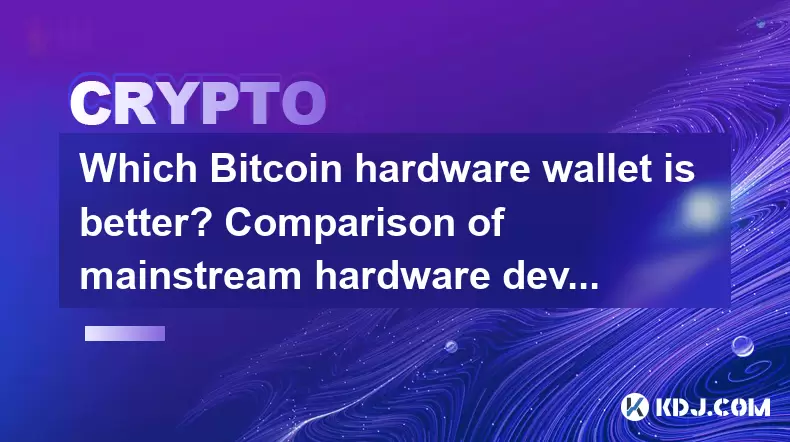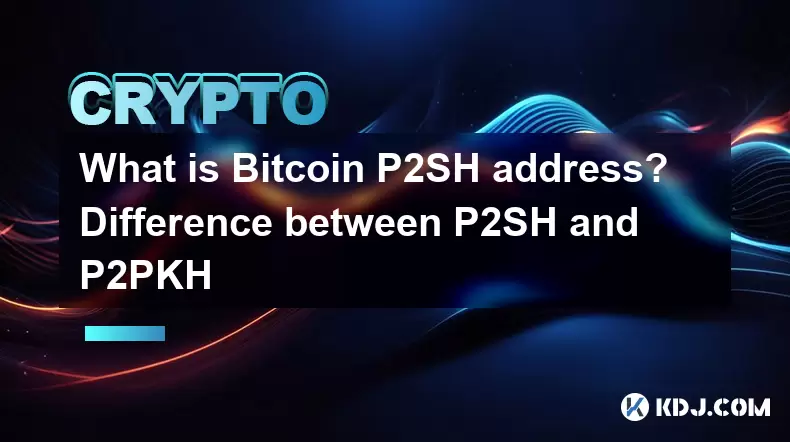-
 Bitcoin
Bitcoin $105,953.9980
3.06% -
 Ethereum
Ethereum $2,445.3292
6.68% -
 Tether USDt
Tether USDt $1.0006
-0.03% -
 XRP
XRP $2.1968
7.03% -
 BNB
BNB $643.2903
2.13% -
 Solana
Solana $144.2799
3.82% -
 USDC
USDC $1.0000
-0.03% -
 TRON
TRON $0.2739
0.49% -
 Dogecoin
Dogecoin $0.1642
4.47% -
 Cardano
Cardano $0.5834
5.49% -
 Hyperliquid
Hyperliquid $38.0741
2.80% -
 Sui
Sui $2.7741
7.56% -
 Chainlink
Chainlink $13.4107
11.26% -
 Bitcoin Cash
Bitcoin Cash $450.4828
-0.61% -
 UNUS SED LEO
UNUS SED LEO $9.1301
0.64% -
 Stellar
Stellar $0.2476
5.49% -
 Avalanche
Avalanche $18.0637
5.09% -
 Toncoin
Toncoin $2.9066
2.43% -
 Shiba Inu
Shiba Inu $0.0...01160
4.01% -
 Hedera
Hedera $0.1527
8.00% -
 Litecoin
Litecoin $84.6122
2.37% -
 Monero
Monero $317.6076
5.76% -
 Ethena USDe
Ethena USDe $1.0008
0.02% -
 Polkadot
Polkadot $3.4519
5.27% -
 Dai
Dai $1.0000
-0.03% -
 Bitget Token
Bitget Token $4.2835
5.62% -
 Uniswap
Uniswap $7.0443
9.78% -
 Pepe
Pepe $0.0...09964
7.41% -
 Pi
Pi $0.5391
4.64% -
 Aave
Aave $264.1743
11.26%
BTC one-hour cycle butterfly pattern precision trading strategy
The BTC one-hour cycle butterfly pattern strategy uses harmonic patterns to predict Bitcoin reversals, requiring precise Fibonacci ratios and risk management for effective trading.
Jun 24, 2025 at 08:21 pm

The BTC one-hour cycle butterfly pattern precision trading strategy is a sophisticated approach used by traders to identify potential reversal points in the Bitcoin market. This strategy leverages the butterfly pattern, a harmonic pattern known for its high accuracy in predicting price reversals. In this article, we will delve into the intricacies of this strategy, explaining how to identify the pattern, set up trades, and manage risks effectively.
Understanding the Butterfly Pattern
The butterfly pattern is a type of harmonic pattern that traders use to predict potential reversal zones. It is named for its resemblance to the wings of a butterfly. The pattern consists of four distinct legs labeled XA, AB, BC, and CD. The key to the butterfly pattern is the specific Fibonacci ratios that each leg must adhere to:
- XA: The initial move from point X to point A.
- AB: A retracement of XA, typically between 78.6% and 61.8%.
- BC: A retracement of AB, usually between 38.2% and 88.6%.
- CD: An extension of XA, typically between 127% and 161.8%.
For the pattern to be valid, the CD leg should extend beyond the XA leg, creating a potential reversal zone (PRZ) at the end of the CD leg.
Identifying the Butterfly Pattern on a One-Hour Chart
To identify the butterfly pattern on a one-hour chart for Bitcoin, traders need to follow these steps:
- Monitor the price action: Keep an eye on the one-hour chart of Bitcoin to identify the initial XA move.
- Track the retracement: Once the XA move is complete, track the AB retracement to ensure it falls within the 78.6% to 61.8% Fibonacci range.
- Observe the BC leg: After the AB retracement, monitor the BC leg to ensure it falls within the 38.2% to 88.6% range of the AB move.
- Watch for the CD extension: Finally, track the CD leg to confirm it extends beyond the XA leg, ideally between 127% and 161.8% of XA.
Using a charting platform with Fibonacci tools can significantly aid in accurately identifying these legs and ratios.
Setting Up a Trade Based on the Butterfly Pattern
Once the butterfly pattern is identified on the one-hour chart, traders can set up a trade to capitalize on the potential reversal. Here are the steps to set up a trade:
- Determine the entry point: The entry point is typically at the end of the CD leg, within the potential reversal zone (PRZ).
- Set the stop loss: Place the stop loss just beyond the PRZ to limit potential losses if the pattern fails.
- Calculate the take profit: Use Fibonacci extensions from the XA leg to determine potential take profit levels. Common levels are 38.2%, 61.8%, and 100% of the XA move.
- Execute the trade: Once the entry point is reached, execute the trade, ensuring the stop loss and take profit levels are set according to the plan.
Managing Risks in Butterfly Pattern Trading
Risk management is crucial when trading the butterfly pattern on a one-hour chart. Here are some strategies to manage risks effectively:
- Position sizing: Only risk a small percentage of your trading capital on each trade to avoid significant losses.
- Use trailing stops: Once the trade moves in your favor, consider using a trailing stop to lock in profits while allowing the trade to run.
- Diversify: Do not rely solely on the butterfly pattern; diversify your trading strategies to spread risk.
- Monitor market conditions: Always be aware of broader market conditions that could affect the validity of the butterfly pattern.
Backtesting the Butterfly Pattern Strategy
Backtesting is an essential step in validating the effectiveness of the butterfly pattern strategy on a one-hour chart. Here’s how to backtest:
- Select a historical period: Choose a historical period to test the strategy, ensuring it covers various market conditions.
- Apply the pattern rules: Identify butterfly patterns on the one-hour chart within the selected period and note the entry, stop loss, and take profit levels.
- Track the results: Record the outcomes of each trade, including wins, losses, and the overall performance of the strategy.
- Analyze the data: Assess the strategy’s performance, focusing on the win rate, risk-reward ratio, and overall profitability.
By backtesting, traders can gain confidence in the strategy and make necessary adjustments to improve its effectiveness.
Practical Example of a Butterfly Pattern Trade
To illustrate the BTC one-hour cycle butterfly pattern precision trading strategy, let’s consider a practical example:
- Identify the pattern: Suppose Bitcoin’s price moves from $40,000 (X) to $45,000 (A), retraces to $42,000 (B), moves to $43,500 (C), and finally extends to $46,500 (D). This forms a potential butterfly pattern.
- Set up the trade: The entry point is at $46,500 (D), the stop loss is set at $47,000 (just beyond the PRZ), and the take profit levels are set at $44,500 (38.2% of XA), $43,000 (61.8% of XA), and $40,000 (100% of XA).
- Execute and manage: Execute the trade at $46,500 and monitor the price action. If the price moves in your favor, consider adjusting the stop loss to lock in profits.
This example demonstrates how the butterfly pattern can be applied in real-time trading scenarios.
Frequently Asked Questions
Q: Can the butterfly pattern be used on other cryptocurrencies besides Bitcoin?
A: Yes, the butterfly pattern can be applied to other cryptocurrencies as well. However, the effectiveness may vary depending on the liquidity and volatility of the specific cryptocurrency. Traders should backtest the strategy on different assets to gauge its performance.
Q: How important is the time frame when trading the butterfly pattern?
A: The time frame is crucial in trading the butterfly pattern. While the one-hour chart is used in this strategy, the pattern can be identified on various time frames. Shorter time frames may offer more trading opportunities but can be noisier, while longer time frames may provide more reliable signals but fewer opportunities.
Q: Is it necessary to use additional indicators with the butterfly pattern?
A: While the butterfly pattern can be used as a standalone strategy, incorporating additional indicators such as moving averages, RSI, or MACD can provide further confirmation of the pattern’s validity and potential reversal. Traders should experiment with different combinations to find what works best for them.
Q: How can traders improve their skills in identifying butterfly patterns?
A: Improving skills in identifying butterfly patterns requires practice and experience. Traders can use demo accounts to practice without risking real money, attend trading courses focused on harmonic patterns, and regularly analyze historical charts to become proficient in spotting the pattern accurately.
Disclaimer:info@kdj.com
The information provided is not trading advice. kdj.com does not assume any responsibility for any investments made based on the information provided in this article. Cryptocurrencies are highly volatile and it is highly recommended that you invest with caution after thorough research!
If you believe that the content used on this website infringes your copyright, please contact us immediately (info@kdj.com) and we will delete it promptly.
- BlockDAG: The Cryptocurrency ROI Revolution
- 2025-06-25 06:45:12
- Layer 1 Crypto Token Presales: What's Hot in the NYC Crypto Scene?
- 2025-06-25 06:30:12
- Ethereum, Investors, and Memecoins: A Wild Ride on the Crypto Coaster
- 2025-06-25 06:30:12
- SEI Price Explodes: Is This Just the Beginning?
- 2025-06-25 07:05:13
- Meme Coins Mania: Arctic Pablo and the Hunt for Presale Gains
- 2025-06-25 06:50:13
- Mark Cuban, Meme Coins, and Scams: A Cautionary Tale
- 2025-06-25 07:05:13
Related knowledge

Which Bitcoin hardware wallet is better? Comparison of mainstream hardware devices
Jun 16,2025 at 02:08am
What Is a Bitcoin Hardware Wallet?A Bitcoin hardware wallet is a physical device designed to securely store the private keys associated with your cryptocurrency holdings. Unlike software wallets, which are more vulnerable to online threats, hardware wallets keep private keys offline, significantly reducing the risk of unauthorized access. These devices ...

What are Bitcoin non-custodial wallets? Self-controlled private key recommendation
Jun 16,2025 at 11:29pm
Understanding Bitcoin Non-Custodial WalletsA Bitcoin non-custodial wallet is a type of digital wallet where users retain full control over their private keys. Unlike custodial wallets, which are managed by third-party services such as exchanges, non-custodial wallets ensure that only the user can access and manage their funds. This means no intermediary...

What is Bitcoin BIP44 standard? Multi-currency wallet path specification
Jun 15,2025 at 04:08pm
Understanding the BIP44 Standard in Bitcoin and CryptocurrencyThe BIP44 standard, which stands for Bitcoin Improvement Proposal 44, is a widely adopted hierarchical deterministic wallet structure used across various cryptocurrencies. It defines a structured path format that enables wallets to support multiple currencies while maintaining consistency and...

What is Bitcoin HD wallet? Advantages of layered deterministic wallets
Jun 16,2025 at 03:56pm
Understanding Bitcoin HD WalletsA Bitcoin HD wallet, or Hierarchical Deterministic wallet, is a type of cryptocurrency wallet that generates multiple keys and addresses from a single seed phrase. Unlike traditional wallets that create random private keys for each transaction, an HD wallet follows a structured hierarchy to derive keys in a deterministic ...

Is Bitcoin zero-confirmation transaction risky? Zero-confirmation usage scenarios
Jun 15,2025 at 03:57am
Understanding Zero-Confirmation Transactions in BitcoinBitcoin zero-confirmation transactions, often referred to as 'unconfirmed transactions,' are those that have been broadcast to the network but have not yet been included in a block. This means they have not received any confirmations from miners. While these transactions can be useful in certain con...

What is Bitcoin P2SH address? Difference between P2SH and P2PKH
Jun 16,2025 at 09:49pm
Understanding Bitcoin P2SH AddressesA Pay-to-Script-Hash (P2SH) address in the Bitcoin network is a type of address that allows users to send funds to a script hash rather than directly to a public key hash, as seen in earlier address formats. This innovation was introduced through BIP 16, enhancing flexibility and enabling more complex transaction type...

Which Bitcoin hardware wallet is better? Comparison of mainstream hardware devices
Jun 16,2025 at 02:08am
What Is a Bitcoin Hardware Wallet?A Bitcoin hardware wallet is a physical device designed to securely store the private keys associated with your cryptocurrency holdings. Unlike software wallets, which are more vulnerable to online threats, hardware wallets keep private keys offline, significantly reducing the risk of unauthorized access. These devices ...

What are Bitcoin non-custodial wallets? Self-controlled private key recommendation
Jun 16,2025 at 11:29pm
Understanding Bitcoin Non-Custodial WalletsA Bitcoin non-custodial wallet is a type of digital wallet where users retain full control over their private keys. Unlike custodial wallets, which are managed by third-party services such as exchanges, non-custodial wallets ensure that only the user can access and manage their funds. This means no intermediary...

What is Bitcoin BIP44 standard? Multi-currency wallet path specification
Jun 15,2025 at 04:08pm
Understanding the BIP44 Standard in Bitcoin and CryptocurrencyThe BIP44 standard, which stands for Bitcoin Improvement Proposal 44, is a widely adopted hierarchical deterministic wallet structure used across various cryptocurrencies. It defines a structured path format that enables wallets to support multiple currencies while maintaining consistency and...

What is Bitcoin HD wallet? Advantages of layered deterministic wallets
Jun 16,2025 at 03:56pm
Understanding Bitcoin HD WalletsA Bitcoin HD wallet, or Hierarchical Deterministic wallet, is a type of cryptocurrency wallet that generates multiple keys and addresses from a single seed phrase. Unlike traditional wallets that create random private keys for each transaction, an HD wallet follows a structured hierarchy to derive keys in a deterministic ...

Is Bitcoin zero-confirmation transaction risky? Zero-confirmation usage scenarios
Jun 15,2025 at 03:57am
Understanding Zero-Confirmation Transactions in BitcoinBitcoin zero-confirmation transactions, often referred to as 'unconfirmed transactions,' are those that have been broadcast to the network but have not yet been included in a block. This means they have not received any confirmations from miners. While these transactions can be useful in certain con...

What is Bitcoin P2SH address? Difference between P2SH and P2PKH
Jun 16,2025 at 09:49pm
Understanding Bitcoin P2SH AddressesA Pay-to-Script-Hash (P2SH) address in the Bitcoin network is a type of address that allows users to send funds to a script hash rather than directly to a public key hash, as seen in earlier address formats. This innovation was introduced through BIP 16, enhancing flexibility and enabling more complex transaction type...
See all articles
























































































